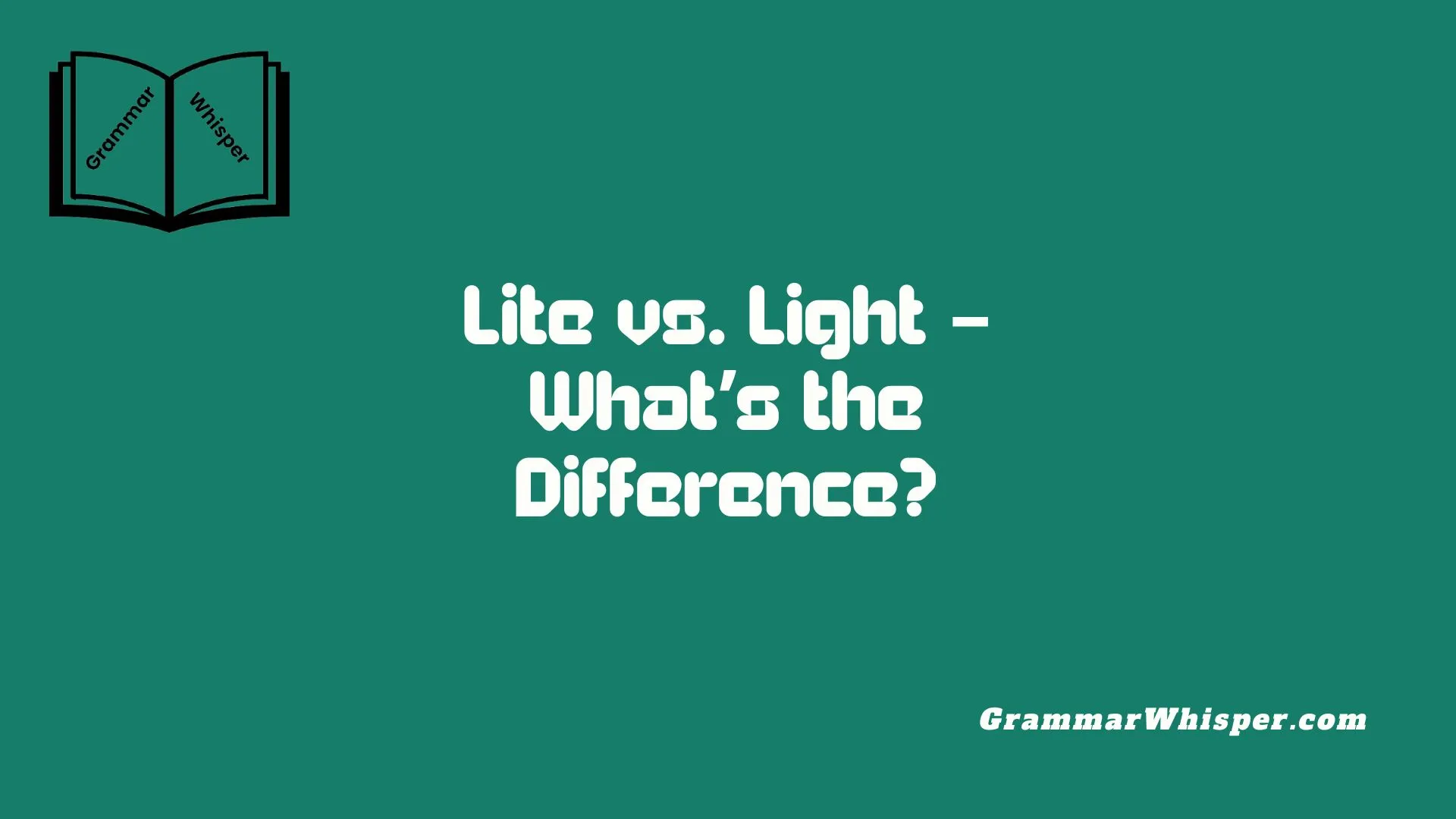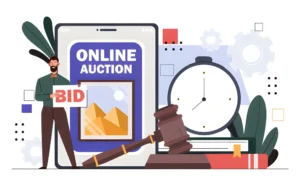When I was writing product descriptions for a health brand, the classic confusion between Lite vs. Light came up more often than you’d think. At first glance, the difference seemed minor, but these words carry distinct meanings, tones, and even cultural weight. The term lite tends to appear in modern, marketing-driven contexts – a leaner, catchier version that fits naturally in an online ad or on a flashy product slogan. In contrast, light has a more serious, historical baggage, grounded in everyday English with broader usages relating to weight, brightness, or calories.
Back when I ran a blog on branding, I learned just how powerful naming conventions can be in shaping perception. Using the right term can reinforce credibility – or completely throw off your audience. In today’s global world, smart brands adapt their tactics to match different cultures, so choosing between lite and light isn’t just guesswork – it’s a strategic move. When chatting with designers or marketers, you’ll see how naturally the word “lite” slips into the conversation. But if you look into its roots, its usage is about style, not grammar. That’s the real difference – one shaped by tradition, the other by trend.
Understanding the Basics: Definitions of “Lite” and “Light”
Let’s begin by breaking down what each word actually means.
Definition of “Light”
Light is a standard English word with multiple meanings, including:
- Brightness: The room was filled with soft light.
- Weight: This bag is light to carry.
- Calories: I had a light lunch.
- Intensity or density: Light rain fell all morning.
It’s versatile and accepted in formal and informal writing. “Light” appears in dictionaries, textbooks, legal documents, and science papers. It’s the go-to word for most situations.
Definition of “Lite”
Lite, on the other hand, is:
- A simplified or stylized spelling of “light”
- Informal and nonstandard
- Used primarily in branding, advertising, and digital interfaces
- Associated with reduced-calorie or stripped-down versions of products or services
Examples:
- Miller Lite
- Pepsi Lite
- Lite version of the app
🔍 Key difference: “Lite” is more about marketing and informality, while “light” is the grammatically correct and conventional spelling.
The Evolution of Language: Tracing the Origins
The Historical Usage of “Light” in English
The word “light” has ancient roots:
- Derived from Old English: līht (light in weight) and lēoht (brightness)
- Connected to Germanic and Latin origins
- Documented usage for centuries across literature, law, and science
This makes “light” a core part of English vocabulary. Its multiple meanings evolved naturally through usage, not invention.
The Emergence of “Lite” in Modern Vernacular
“Lite” is relatively modern. Here’s how it came into being:
- First popularized in the mid-20th century, especially in the United States
- Coined for marketing purposes to attract attention and stand out
- Meant to convey “light” without sounding clinical or boring
- Became heavily associated with diet, health-conscious, or reduced-fat/calorie products
Case Study: Miller Lite
In 1975, Miller Brewing Company launched Miller Lite, one of the first low-calorie beers. The spelling wasn’t just catchy – it was strategic. It suggested something new, cool, and different from the traditional “light” beers. The result? It changed the beer industry forever.
Common Uses in Everyday Language
Let’s explore where each term shows up in real life.
Where You’ll See “Light”
- Menus: light soup, light sandwich
- Packaging: light olive oil, light cheese
- Home design: light wood, light paint
- Fitness blogs: light cardio, light stretching
- Technology: light theme, light version
Where “Lite” Shows Up
- Product names: Lite salt, Lite butter
- Mobile apps: Facebook Lite, Spotify Lite
- Low-calorie branding: Snack Lite
- Gaming: Lite mode, Lite edition
🧠 Tip: When in doubt, if it’s a product name or app, it’s probably “lite.” Otherwise, stick with “light.”
When to Correctly Use “Lite”
While “lite” isn’t grammatically incorrect, its use is highly limited.
✅ Use “lite” when:
- Referring to a product or brand name that uses the spelling
- Creating a trademarked or stylized term
- Talking about a simplified version of something (e.g., “lite version of the app”)
🚫 Don’t use “lite” in:
- Formal writing
- Emails to your boss
- Academic papers
- News articles
Even in casual speech, overusing “lite” can sound awkward or immature.
Appropriate Contexts for “Light”
“Light” is the safer, broader, and more formal choice in almost every situation.
Use “light” when referring to:
- Illumination: Switch on the light.
- Weight: It’s a light package.
- Food & drink: light beer, light cream
- Mood or tone: a light-hearted movie
- Colors: light blue walls
- Calorie content (regulated): light sour cream
✅ Always choose “light” unless you’re referencing a product that officially uses “lite.”
The Role of “Lite” and “Light” in Marketing
Brands often bend language rules for attention – and “lite” is a prime example.
Why Marketers Choose “Lite”
- Shorter and snappier
- More modern and playful
- Visually distinctive on packaging
- Helps evoke a “lighter” version of something without making health claims
But here’s the trick: using “lite” may allow companies to avoid certain regulatory definitions, especially in the U.S.
Branding Examples: Real-World Use of “Lite”
| Brand/Product | Lite Used For | Purpose |
| Miller Lite | Beer | Fewer calories than regular beer |
| Pepsi Lite | Soda | Diet version of Pepsi |
| Lite Salt | Table salt | Lower sodium content |
| Facebook Lite | Mobile app | Lightweight, data-saving version |
| Spotify Lite | Music app | Smaller, faster app for slower networks |
🔍 Notice the pattern: “Lite” sells simplicity, speed, or health – even if it’s just perception.
Spotting “Light” on Product Labels and Its Implications
Unlike “lite,” “light” is often regulated, especially in food labeling.
FDA Regulations (United States)
According to the U.S. Food and Drug Administration (FDA):
A product labeled “light” must have at least 50% less fat or calories than the regular version.
This means when you see “light” on packaging:
- It’s not just marketing
- There’s a quantifiable difference
- The claim is legally enforced
But be careful – brands sometimes use vague terms like:
- “Lightly sweetened”
- “Light texture”
These aren’t always regulated.
Formality in Writing: Choosing the Right Word
Let’s say you’re writing a business email, a research paper, or even a blog post. Which one should you choose?
| Writing Context | Correct Term |
| Academic essay | Light |
| Legal document | Light |
| Blog post (non-branded) | Light |
| Marketing slogan | Lite (if stylized) |
| Product name | Lite |
| User interface copy | Lite (sometimes) |
Unless you’re deliberately adopting a playful, branded tone, “light” is always the safer choice in writing.
Cultural and Regional Differences
U.S. vs. U.K. English
In the United States, “lite” is a recognizable marketing tool. But in British English, the spelling is far less common.
- U.S. English: Miller Lite, Facebook Lite
- U.K. English: More likely to stick with “light,” even in branding
Global Marketing Adjustments
Multinational brands often:
- Use “lite” in the U.S.
- Revert to “light” or neutral phrasing elsewhere
- Translate differently depending on local language norms
Implications of Getting It Wrong
Using the wrong term isn’t just a typo – it can carry consequences.
In Branding:
- Using “lite” when you mean “light” may confuse consumers
- May violate labeling laws, especially around food content
- Risks your brand being perceived as unprofessional or gimmicky
In Writing:
- Using “lite” in formal contexts will lower your credibility
- Editors and readers may question your attention to detail
- Your message may seem less trustworthy
Real-World Example
An online wellness coach once launched an e-book titled “Lite Meals for the Week.” Despite helpful content, reviews criticized the title for sounding gimmicky and confusing. A rebranding to “Light Meals for the Week” improved click-through rates and audience trust.
Quick Reference Table: When to Use “Lite” vs. “Light”
| Use Case | Use “Light” | Use “Lite” |
| Formal writing | ✅ | ❌ |
| Branding or trademarks | ❌ | ✅ |
| Describing calorie content | ✅ (regulated) | ✅ (informal/branding) |
| Mobile apps/games | ❌ | ✅ |
| Describing weight or color | ✅ | ❌ |
| Product packaging | ✅ (factual claim) | ✅ (marketing appeal) |
| UX/UI or app names | ❌ | ✅ (common practice) |
Final Word
Here’s what you need to remember:
- “Light” is standard, correct, and used in every formal or descriptive context
- “Lite” is informal, modern, and mainly exists in branding and tech
- Use “light” when you’re unsure – it won’t steer you wrong
- Only use “lite” when it’s part of a product name, app, or stylized phrase
FAQs
Is “lite” grammatically correct?
Technically yes, but it’s nonstandard. It’s best reserved for branding or digital terms.
Can I use “lite” in professional writing?
Avoid it unless you’re referencing a specific brand or product that uses the spelling.
Is there a difference in pronunciation?
No. “Lite” and “light” are pronounced the same.
Does “lite” always mean fewer calories?
Not necessarily. “Lite” is not regulated, so it could mean fewer calories – or just be marketing spin.











